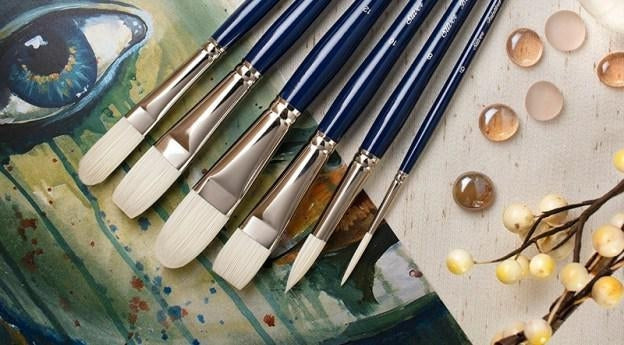
Brush Shapes: Flat VS Bright
Every artist has a preference when it comes to the shape of the brush they reach for the most. For example, portrait artists lean towards filberts while watercolorists enjoy the versatility of a nice pointed round. When it comes to brights and flats, however, some artists wonder, “What’s the difference?” Let us break it down for you!
Flat brushes have a filament length that is more than twice as long as its width which means:
- Flats hold quite a lot of color
- Artists who like to lay down a generous amount of color all at once or would rather not reload frequently can rely on flats to carry color for quite a few strokes
- Flats offer a looser stroke
- The longer length of the filament means you have less control
- Flats generate a longer stroke
- The longer length lends itself to more expressive strokes
- Flats have more flexibility
- This shape allows you to apply plenty of pressure when you really want to push the paint into your canvas

Bright brushes have a filament length that is nearly equal to its width which means:
- Brights hold a modest amount of color
- For artists that don’t want to add too much color all at once, a bright brush is the perfect shape
- Brights provide excellent controllability
- You will have more control over your stroke, which can be a really good thing for new artists
- Short, quick strokes are much easier to achieve
- When compared to a flat, the bright shape makes a small stroke simple
- Scumble away!
- Brights are excellent scrubbing or scumbling brushes because the short filament keeps them stiff and allows you to get rough
Here are some paintings from artists who prefer one shape over the other:

